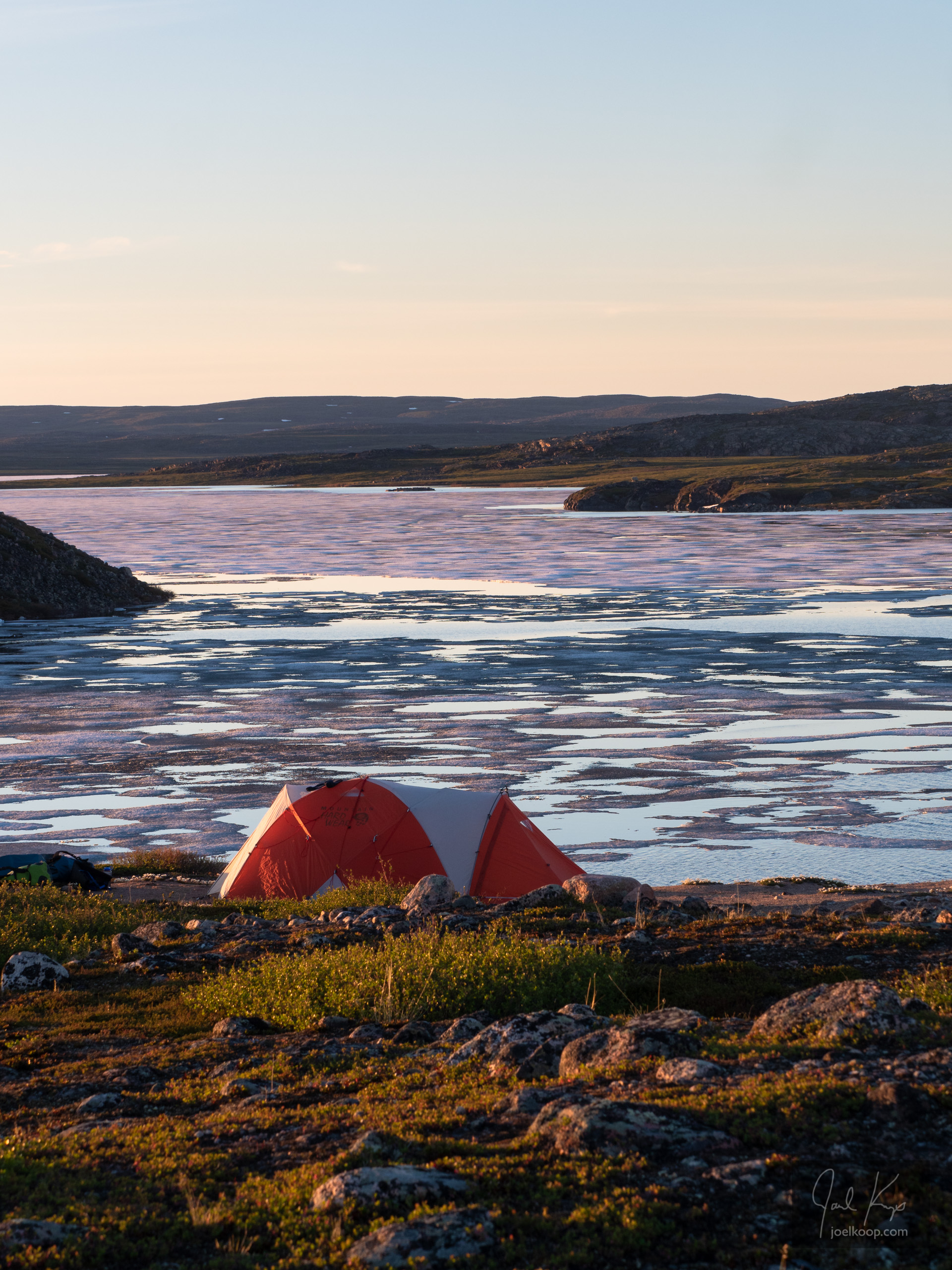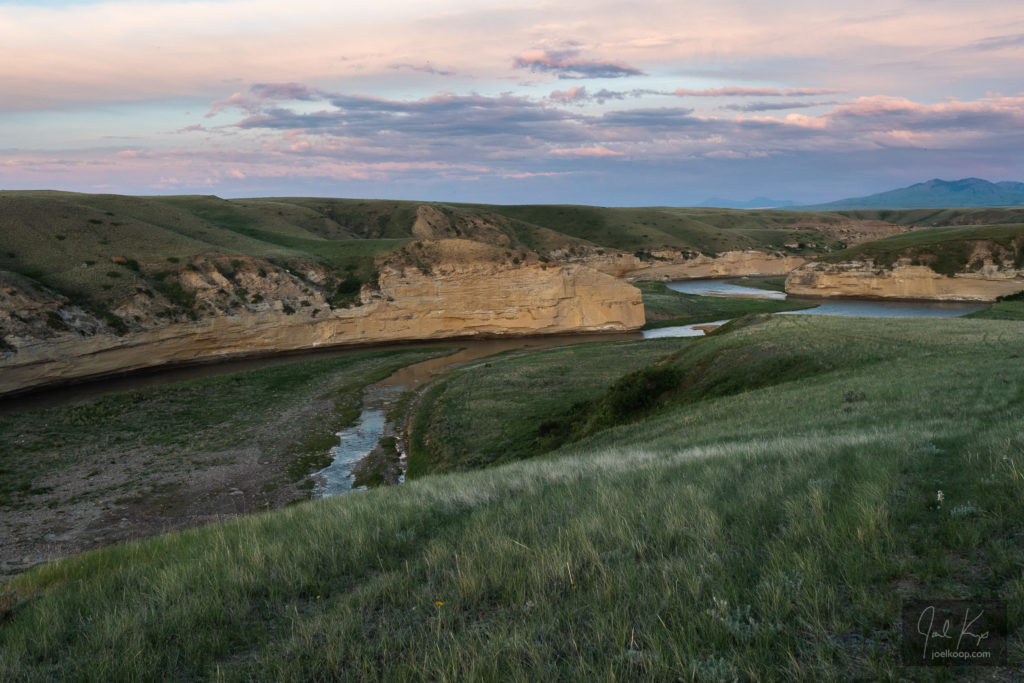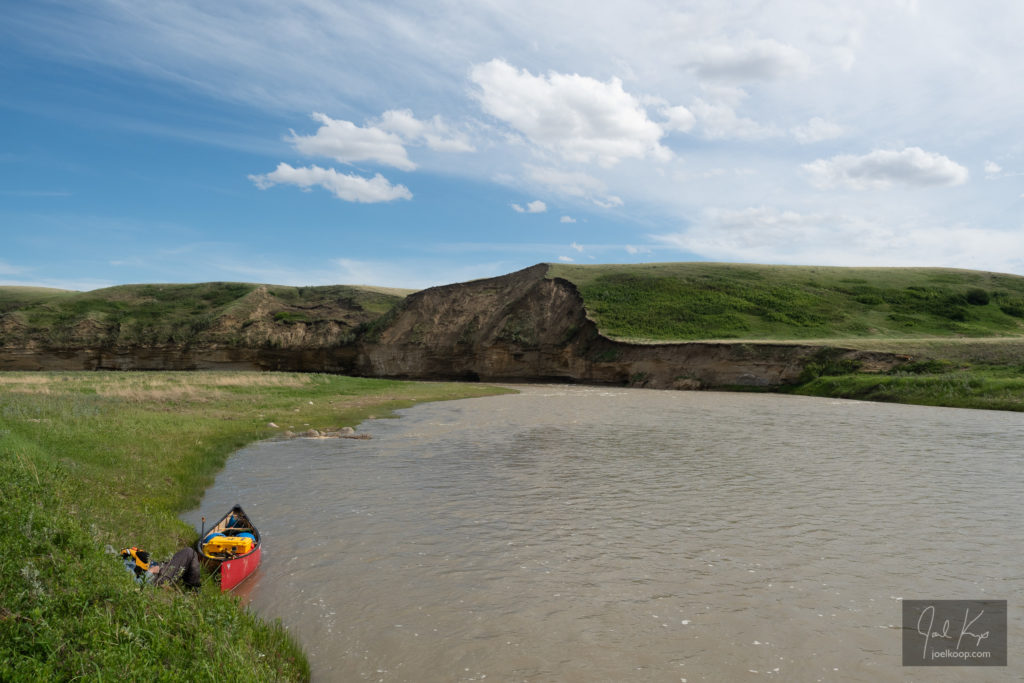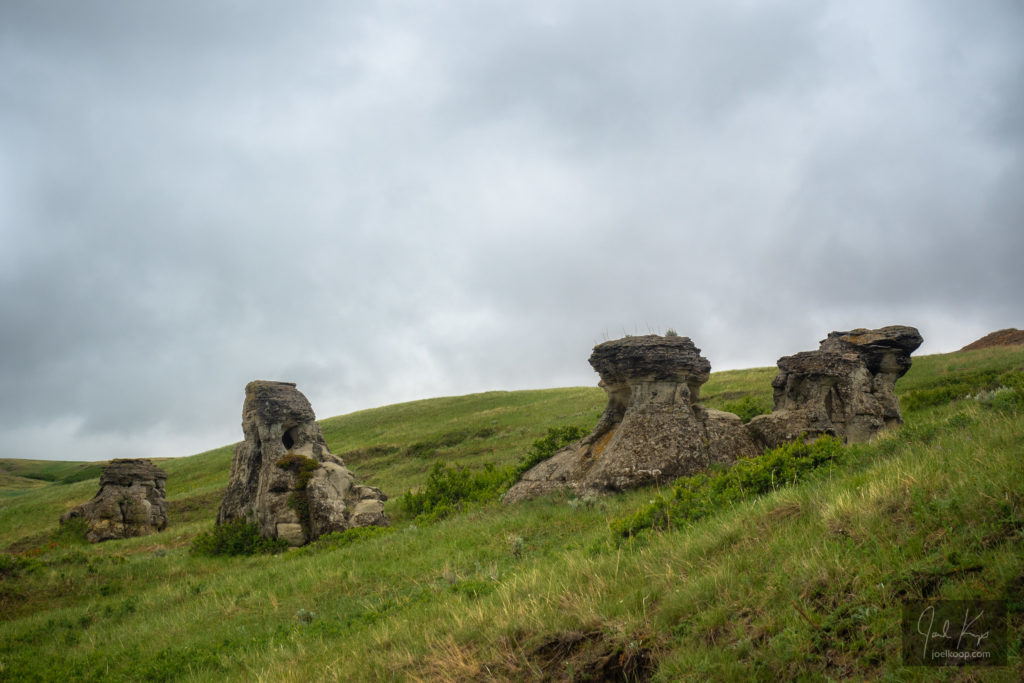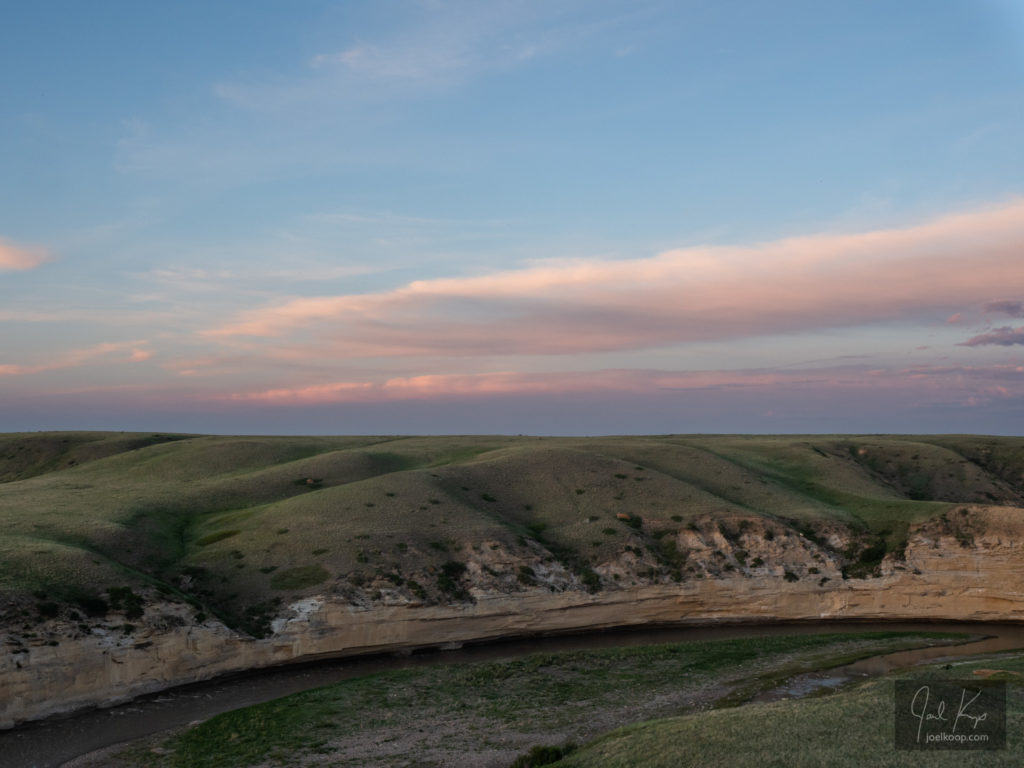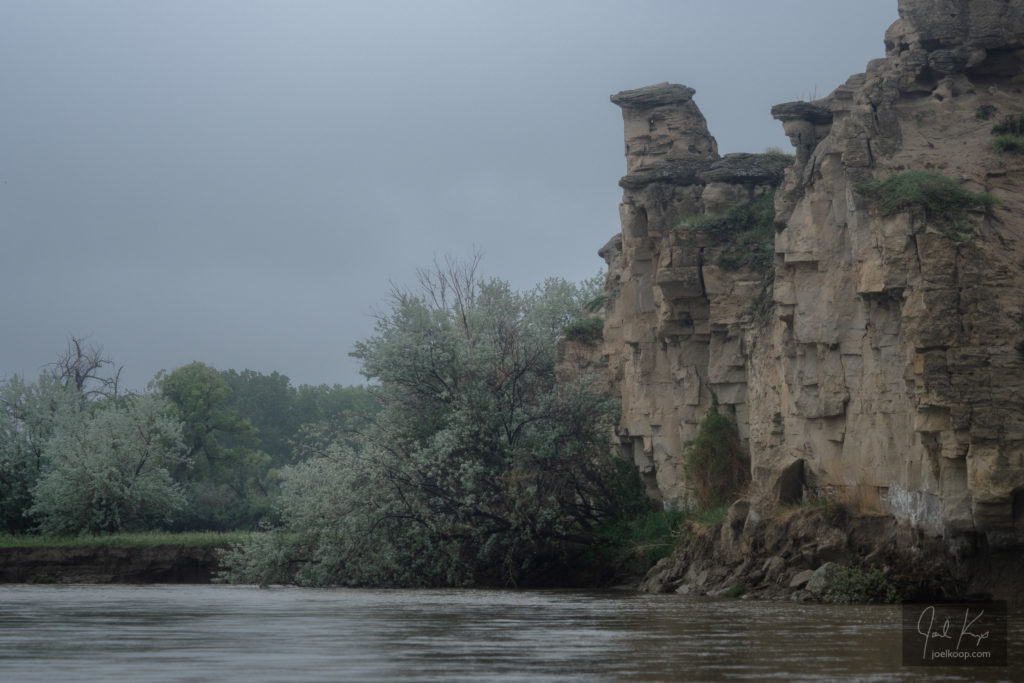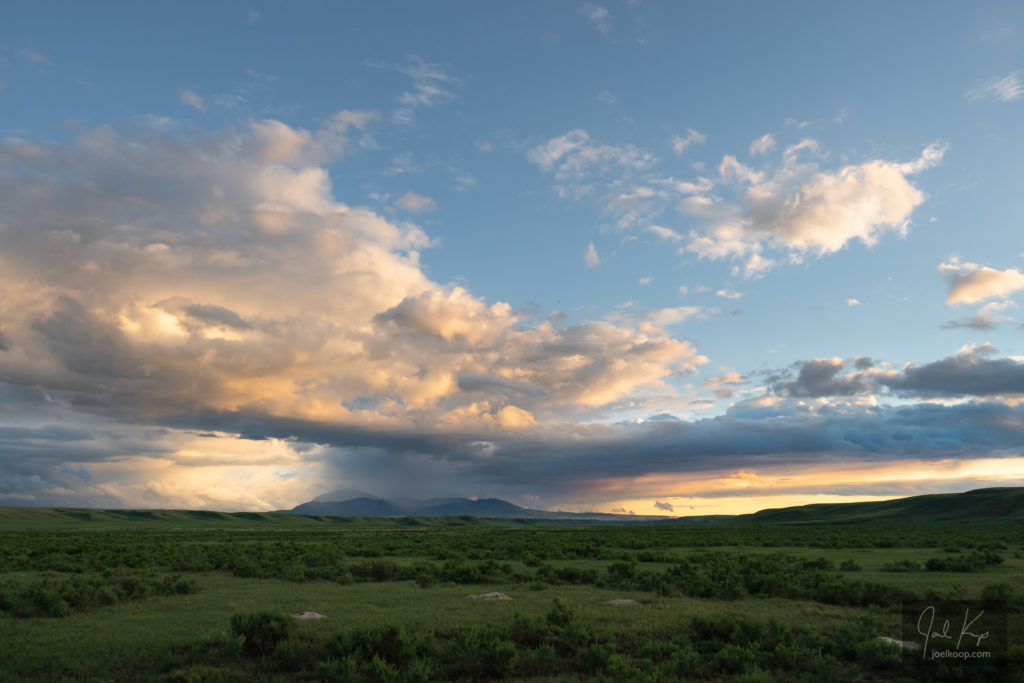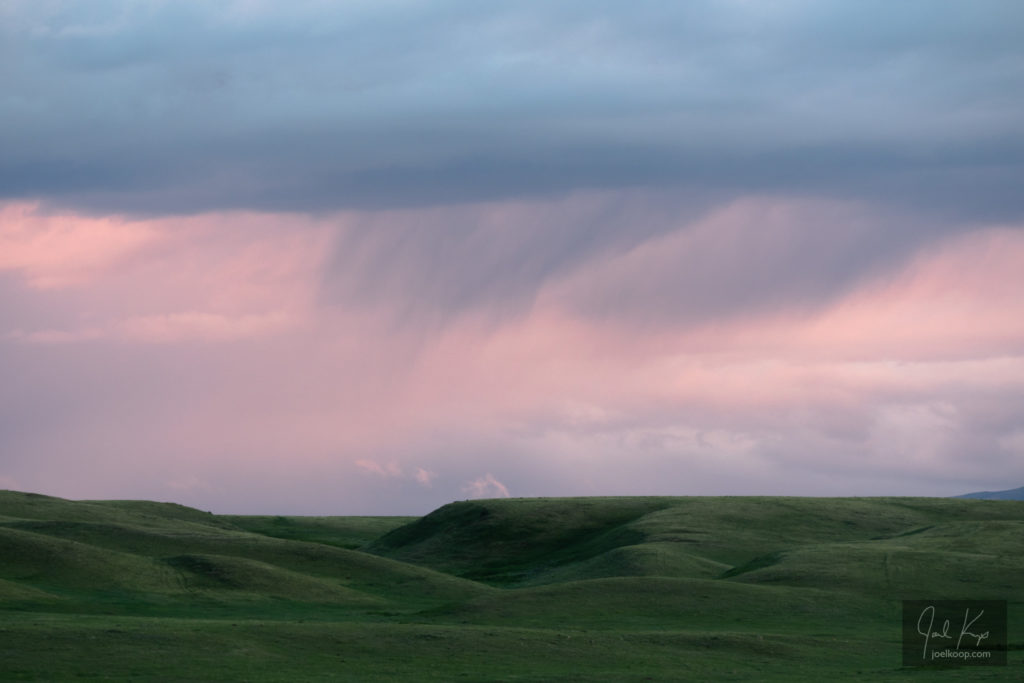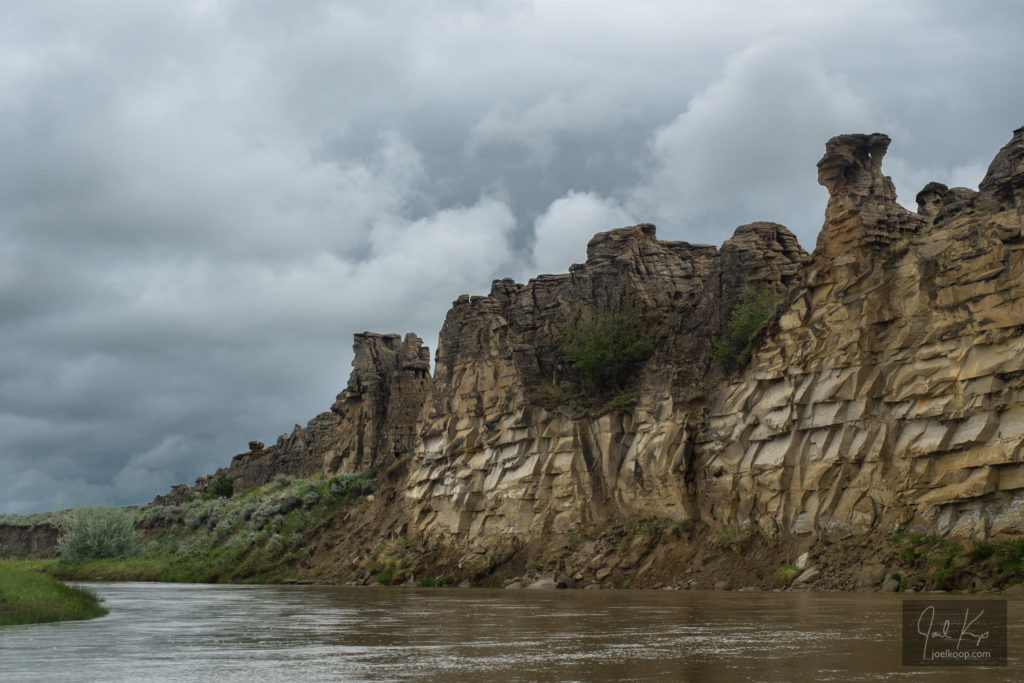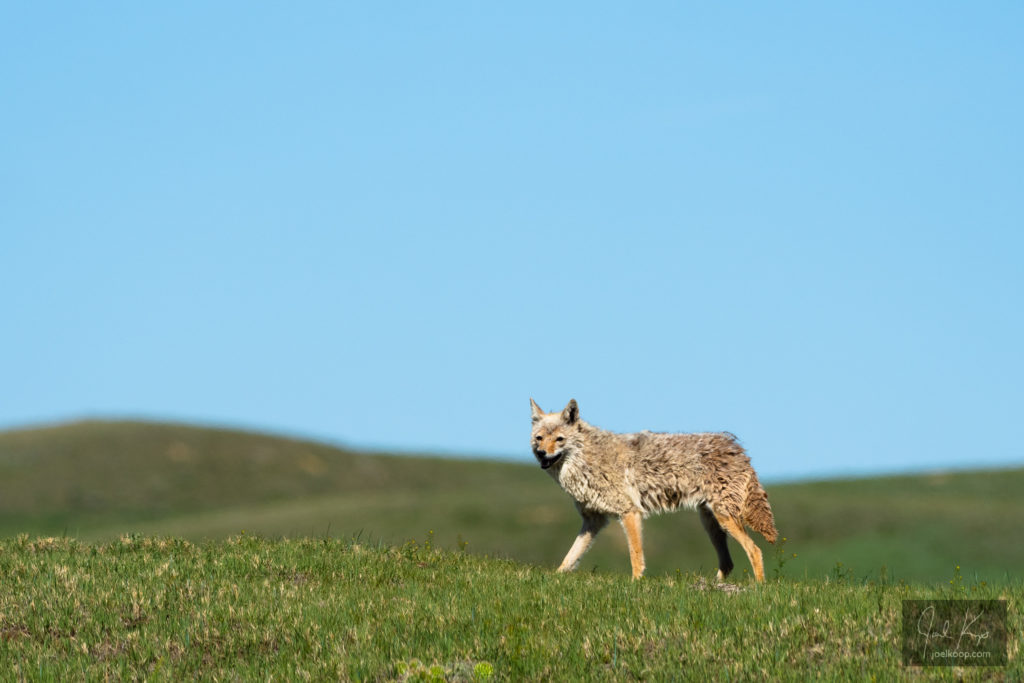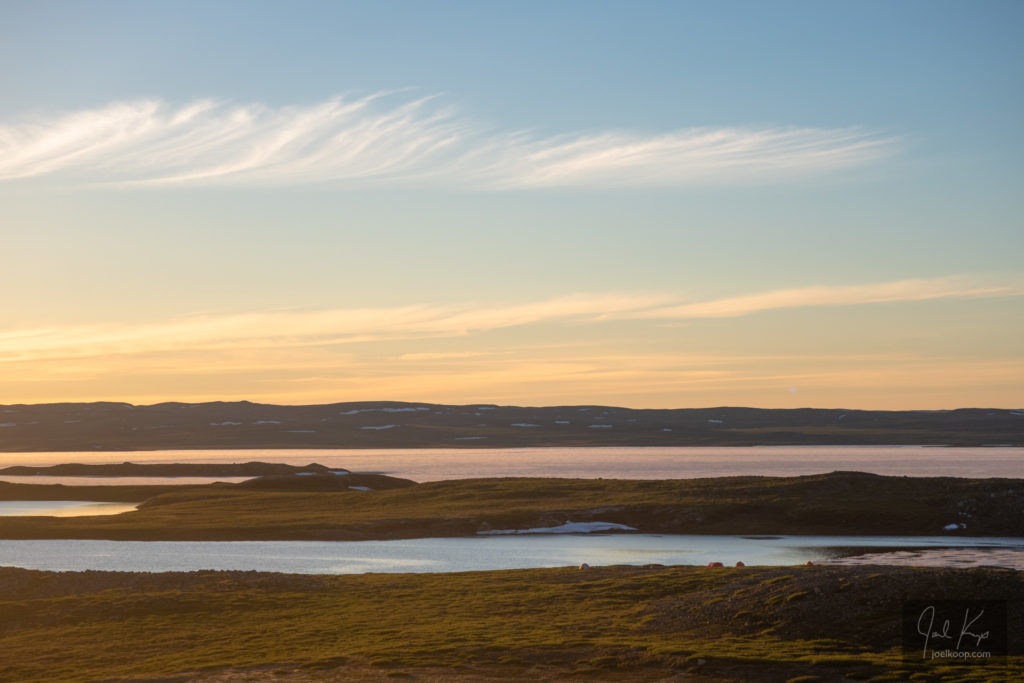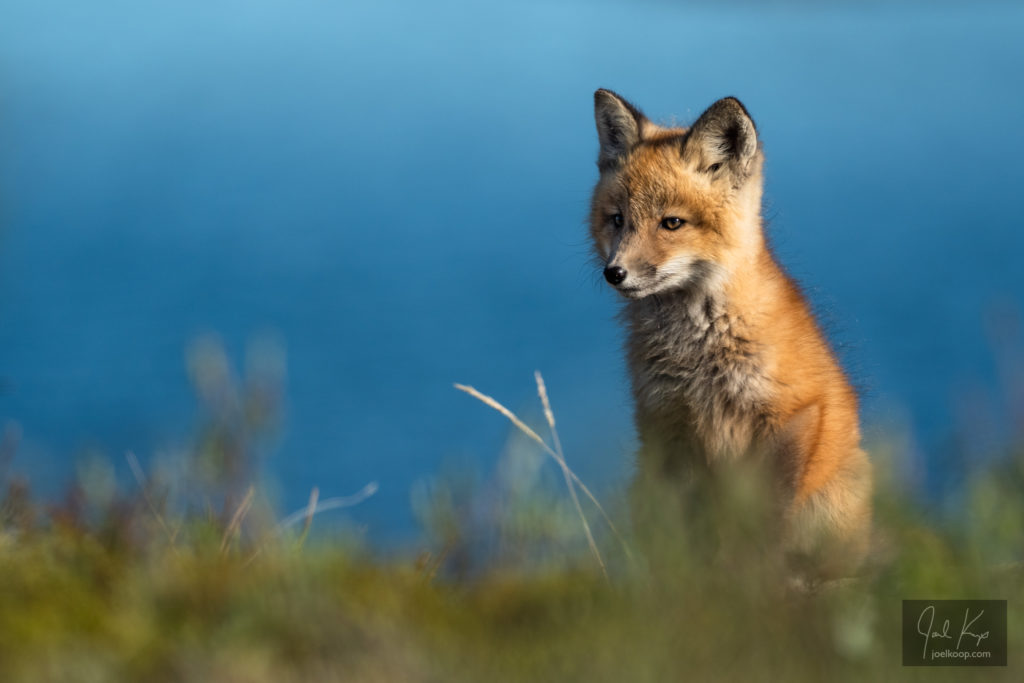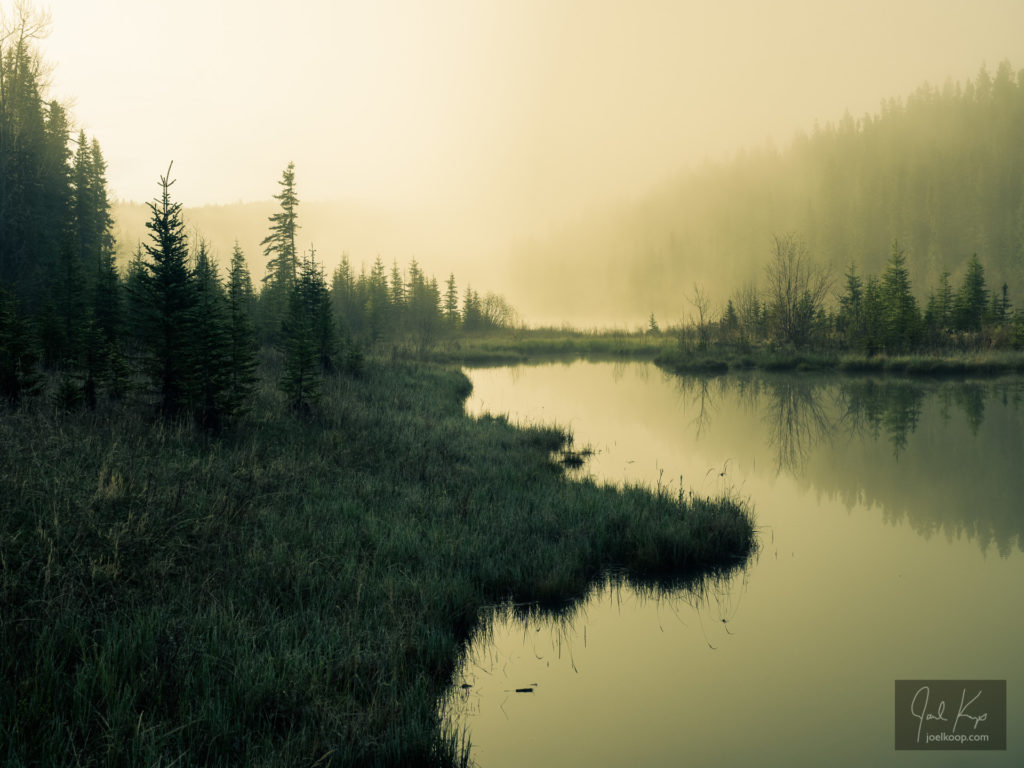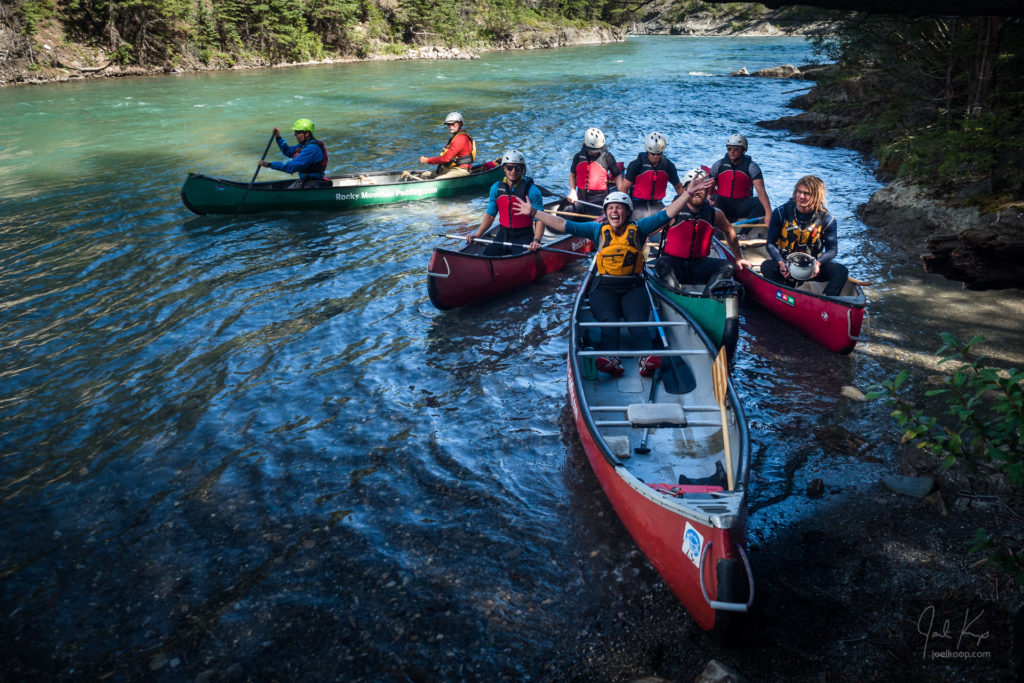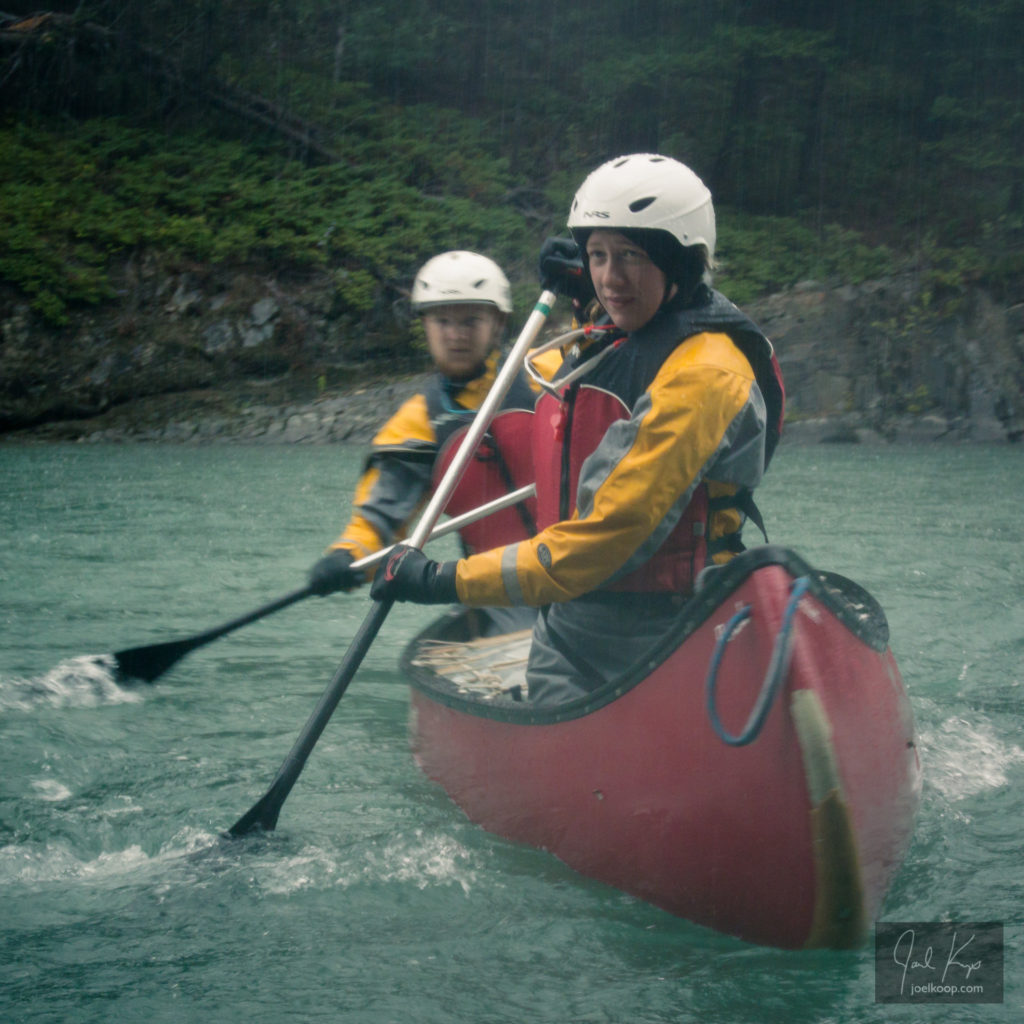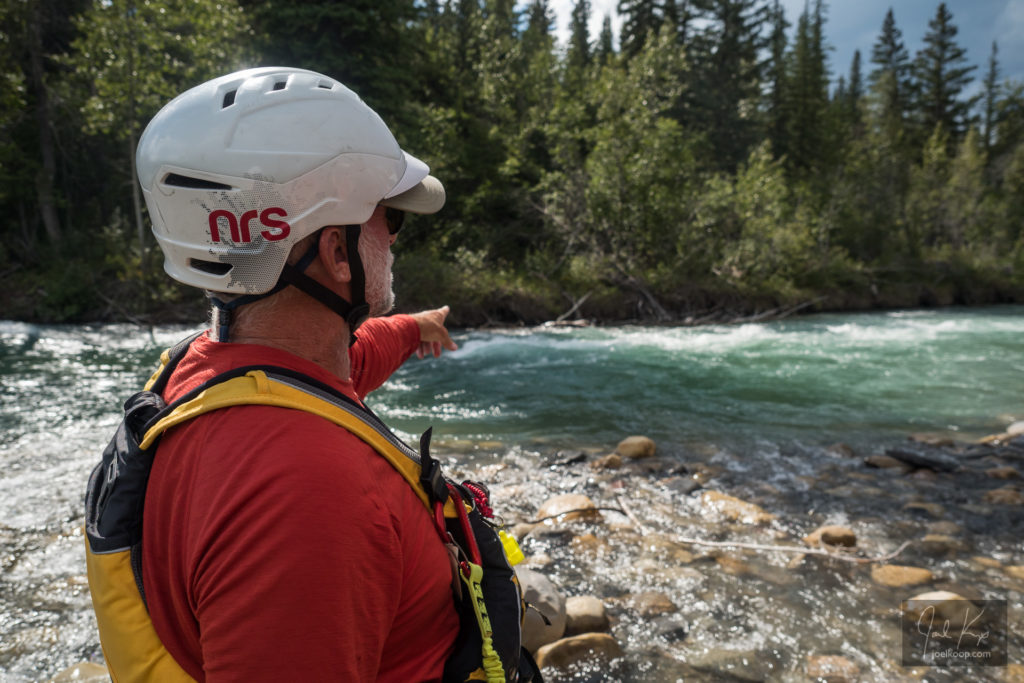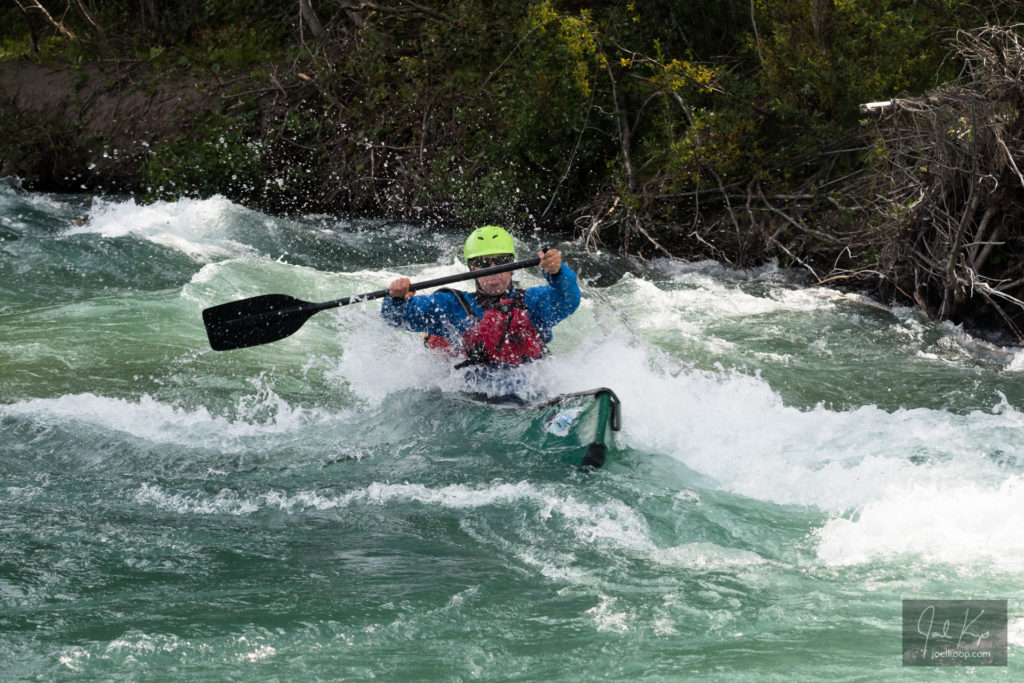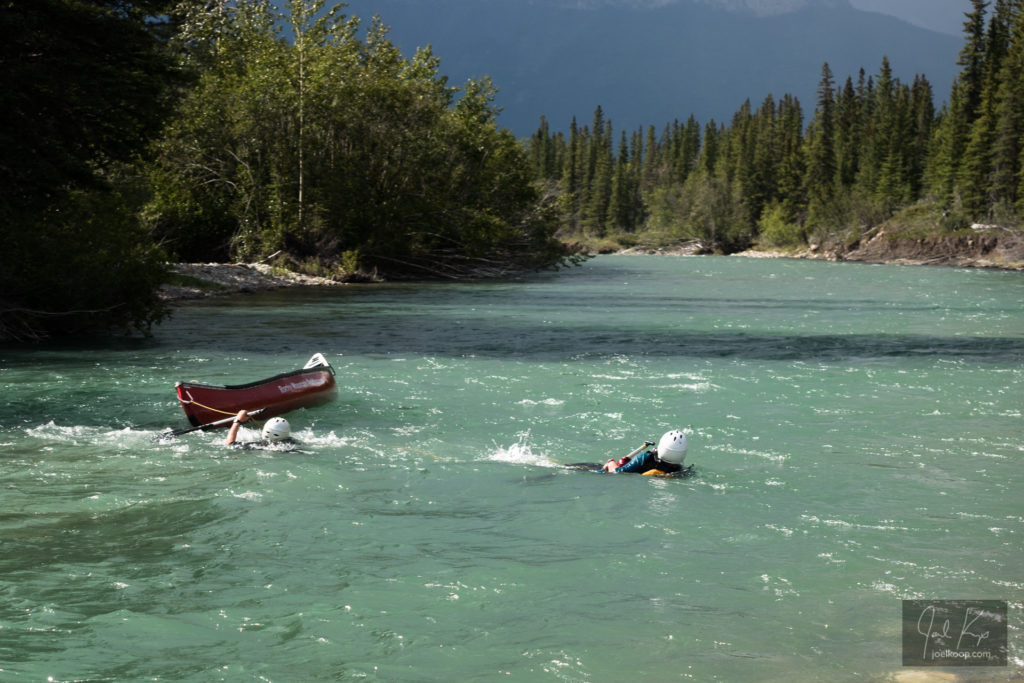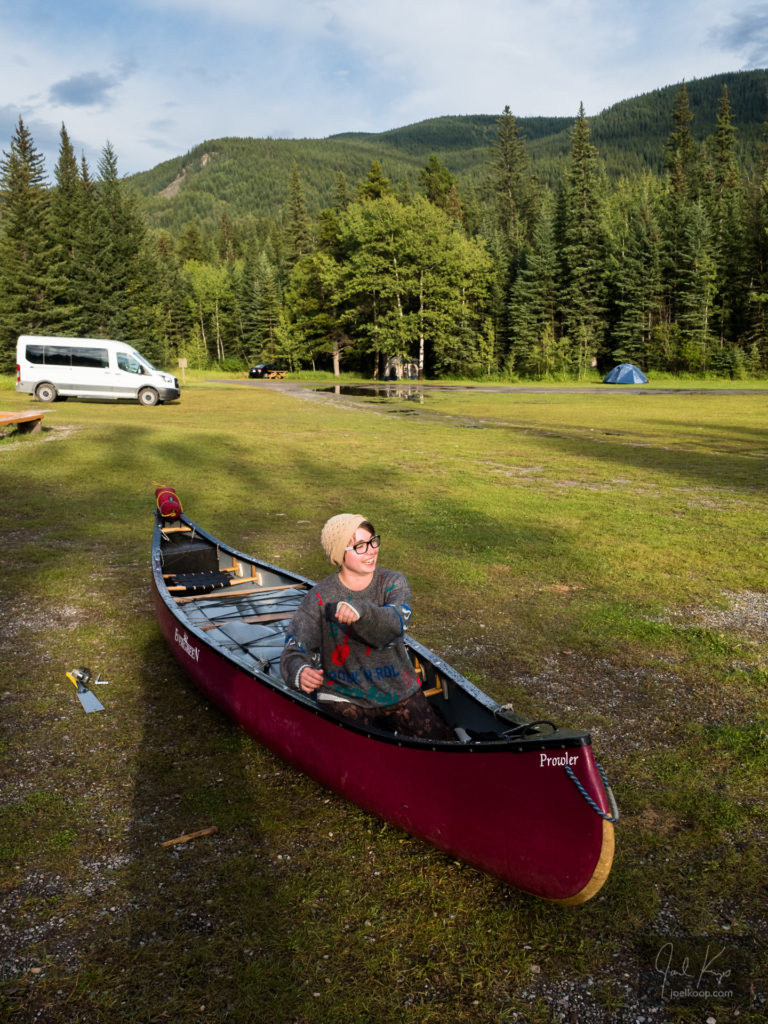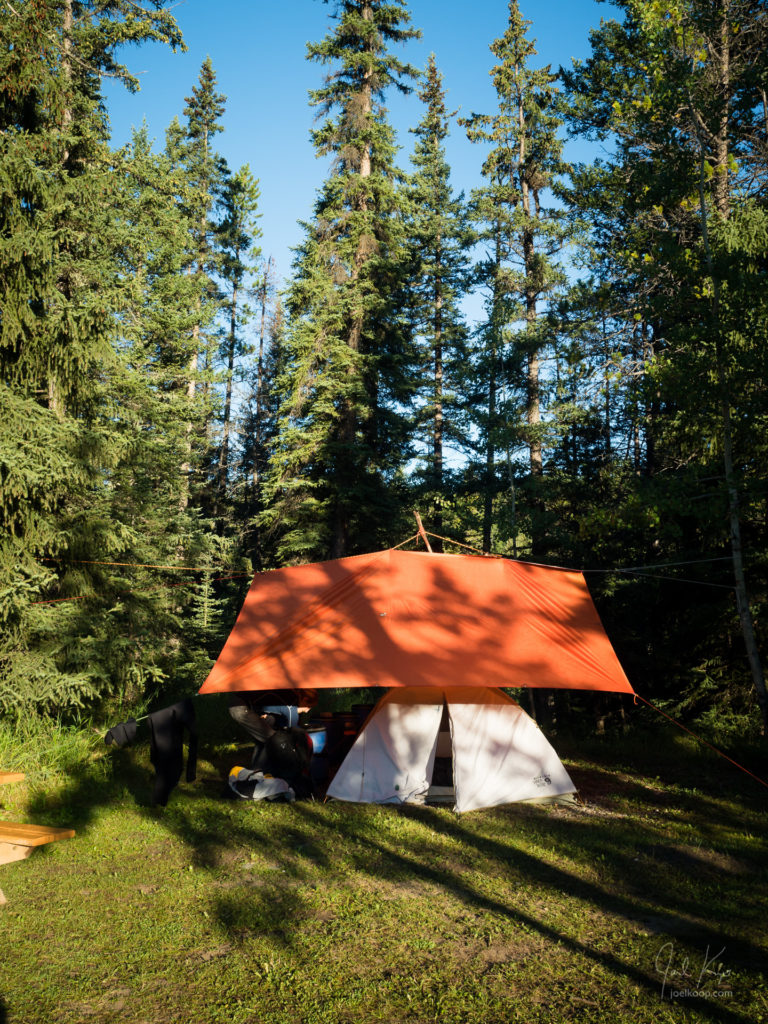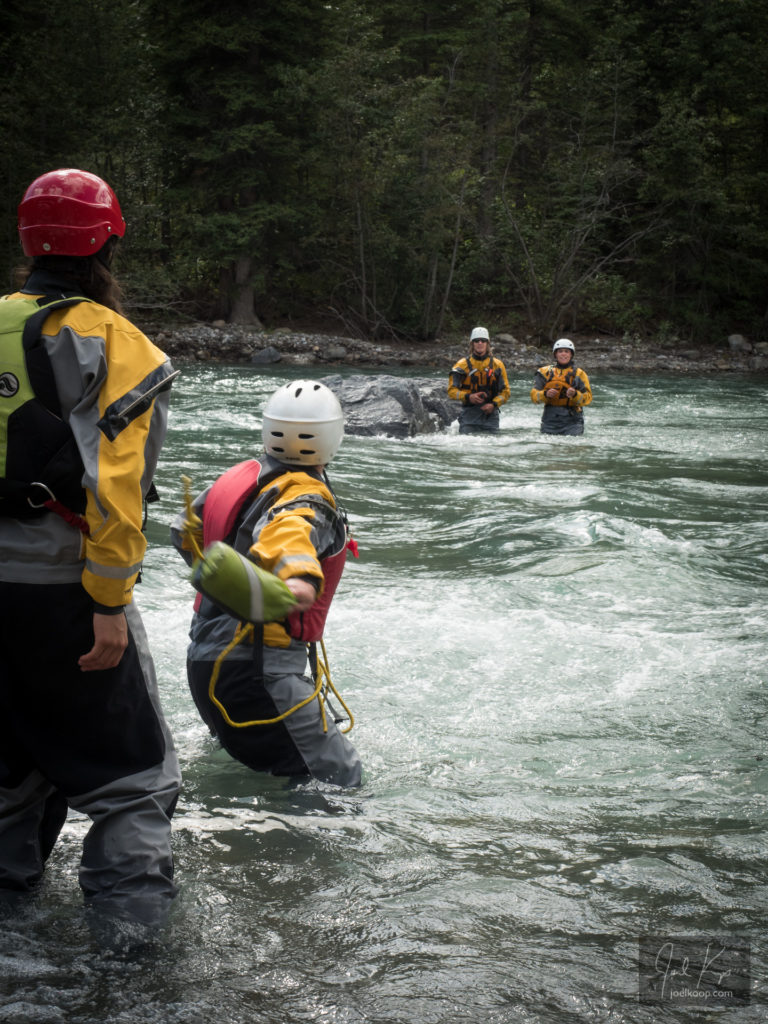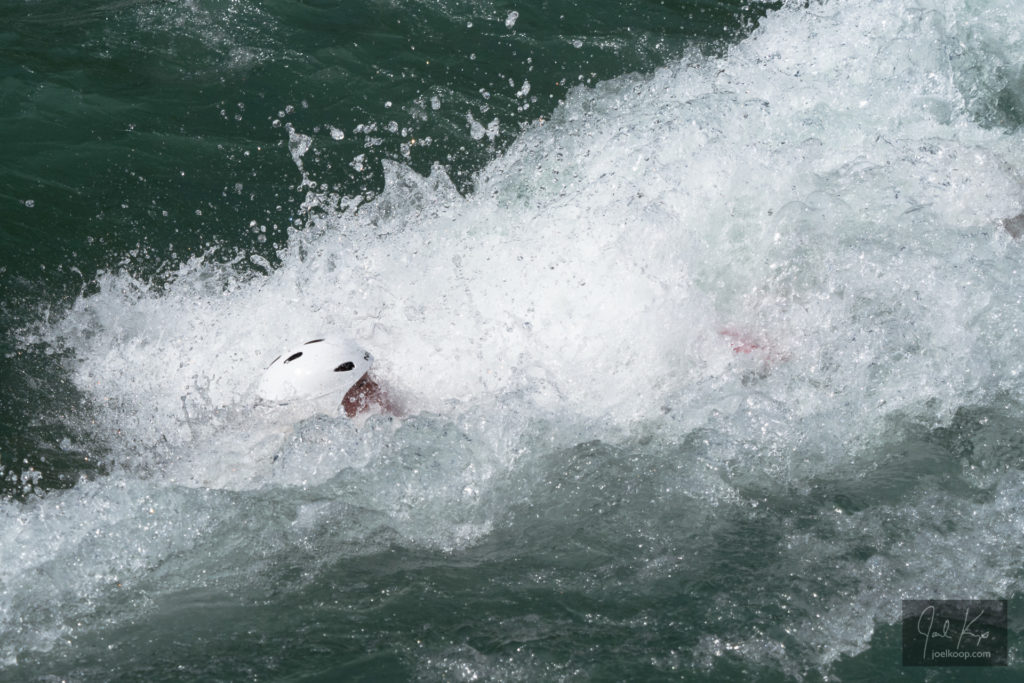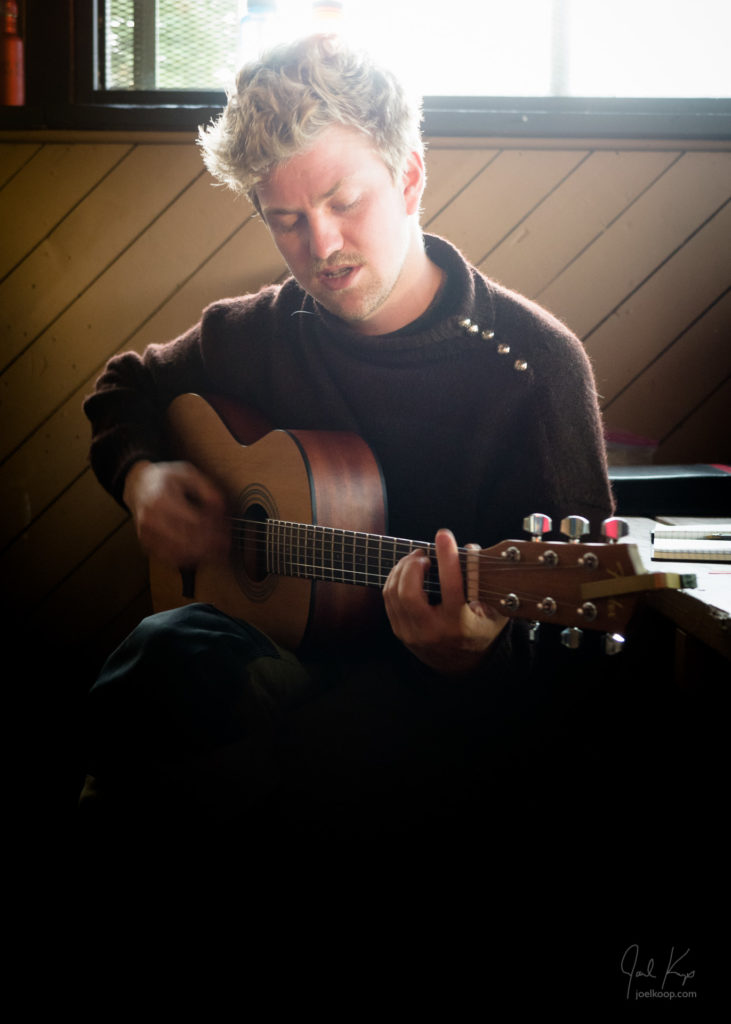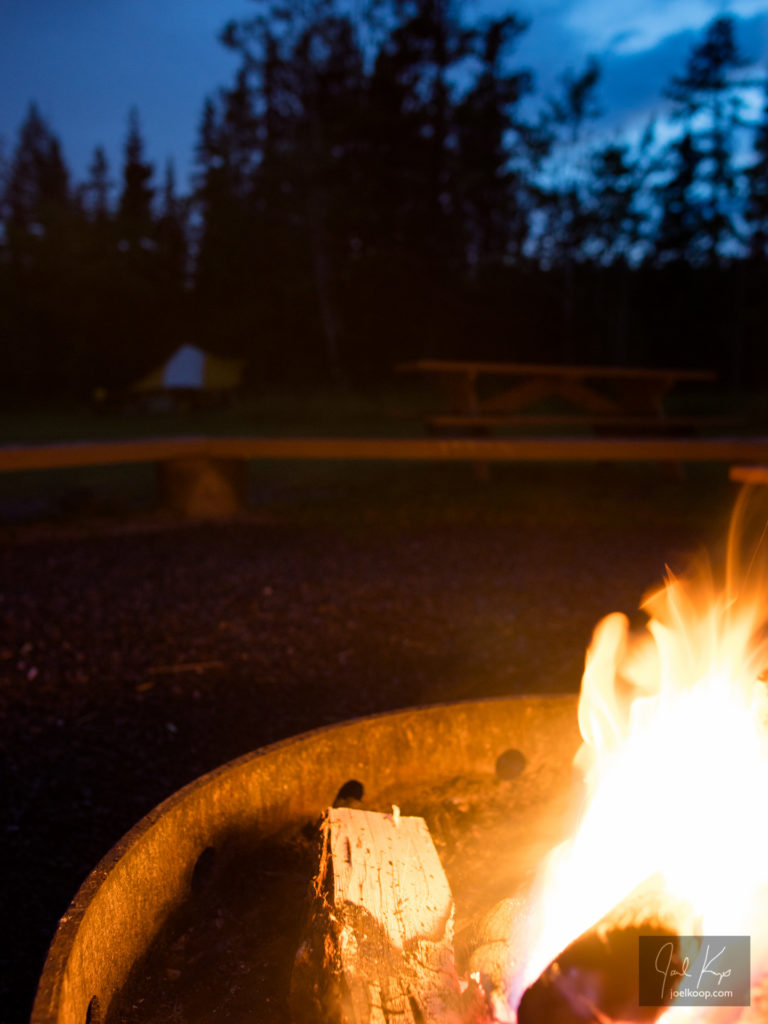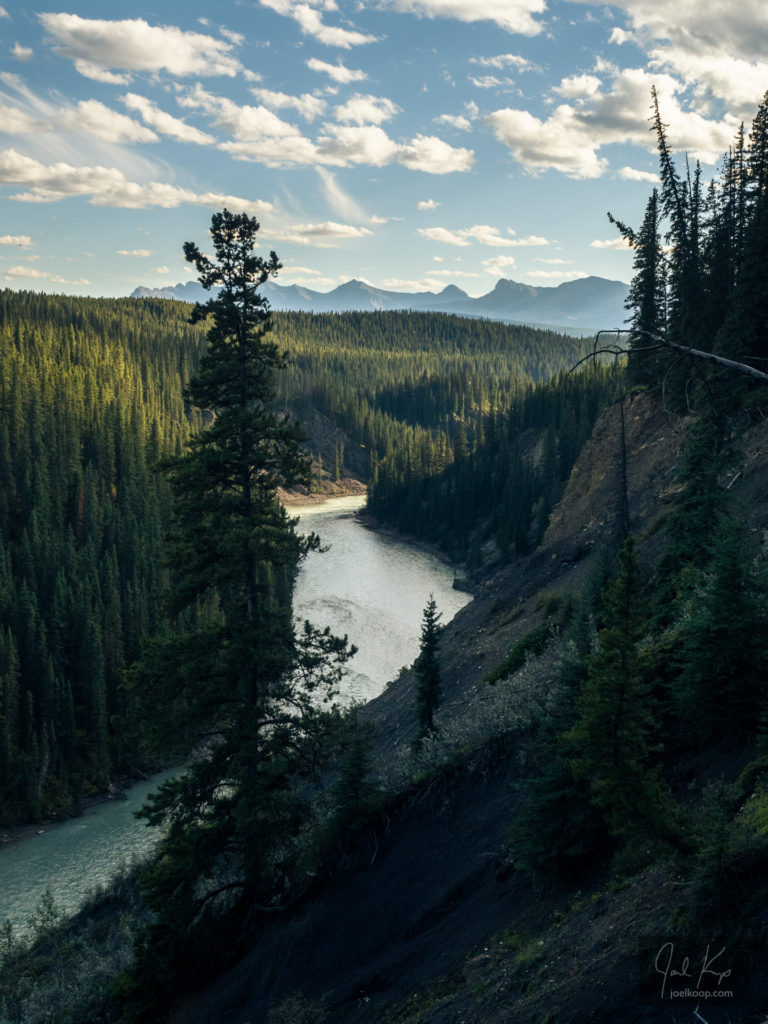
The middle part of August was spent on the Brazeau River. The trip started with a drive to the put-in and a portage to get the boats and gear down to the river. It was supposed to be a roughly 2km portage, but it turned out the river had moved and there was no good place to put in where we had planned. This required a short planning session, a bit of exploration, and eventually a longer portage.
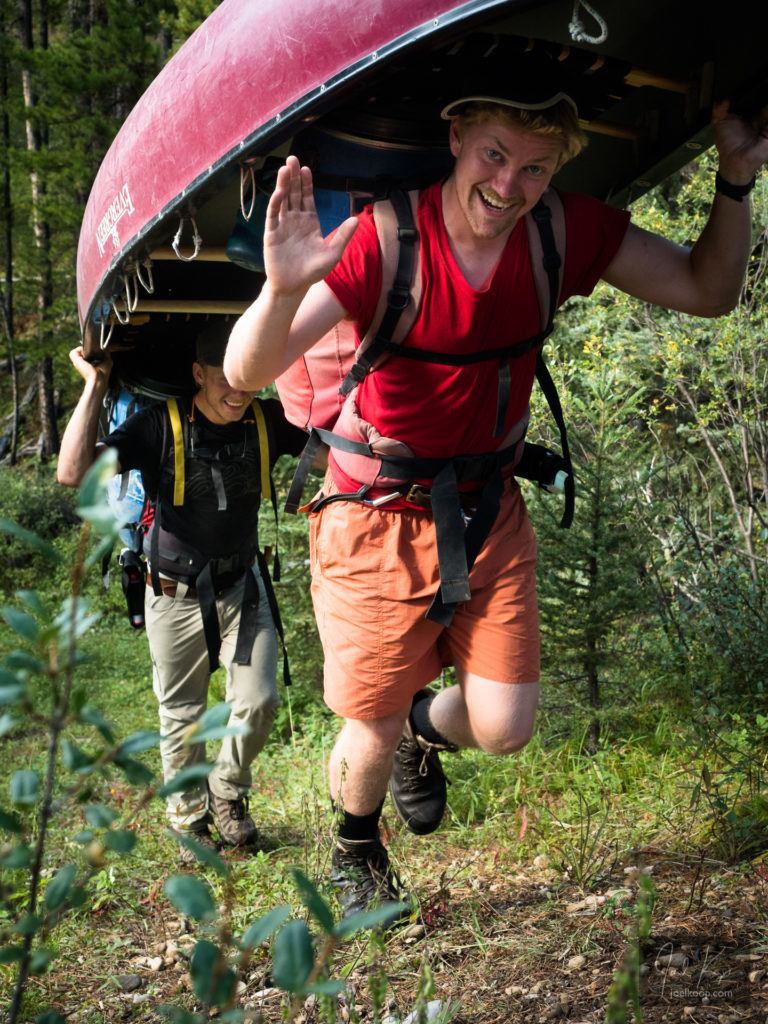
To get the boats down the steep bank to our new campsite and put-in, we built a pulley system to lower the canoes with gear in them. The portage and lowering took until after 9pm, at which point we were all hungry and tired.

But we were finally at the river. We had canoes and gear and could start our trip. Despite being tired, I couldn’t resist staying up a little later to see the stars come out, watch the moon rise, and listen to the river rushing by. Tomorrow we would be canoeing this beauty, and that was exciting!
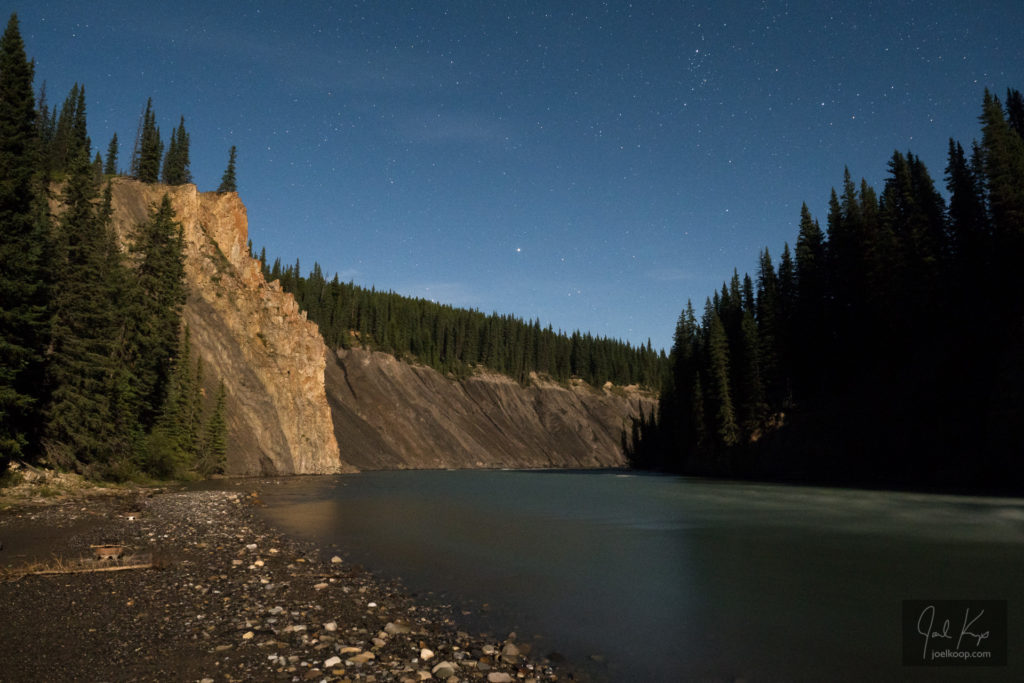
The next day dawned clear and bright. After a breakfast of toast and beans warmed over a fire, we packed up our tents and sleeping bags, loaded the canoes, and started paddling.
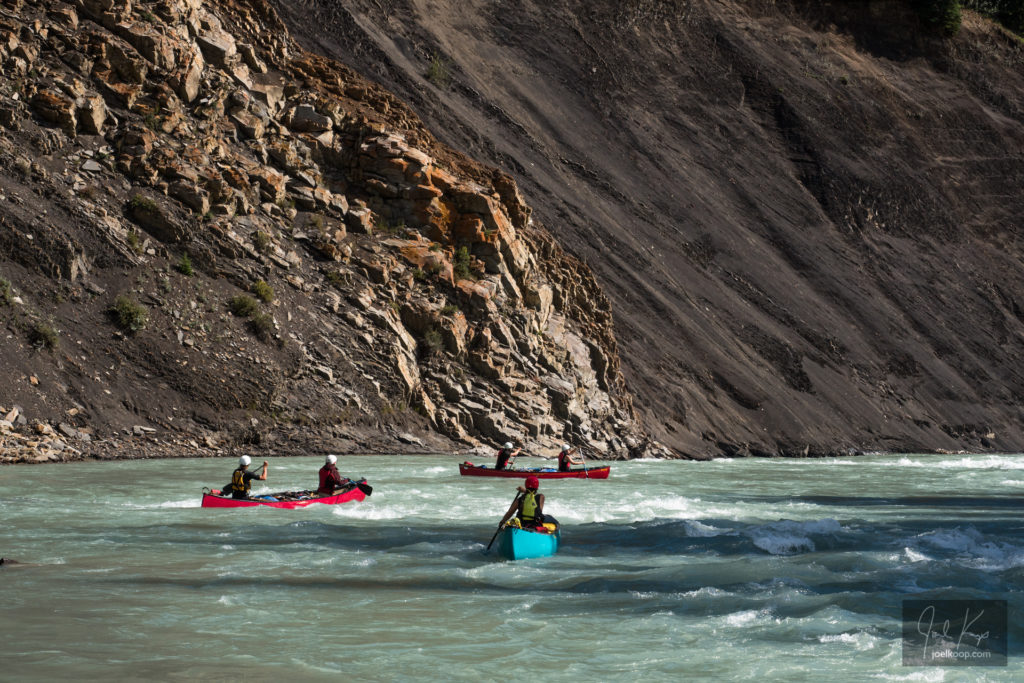
At almost every corner there were significant rapids and we would stop to scout them. Often they were not a big deal, but every once in a while there would be some high-consequence rocks to avoid.
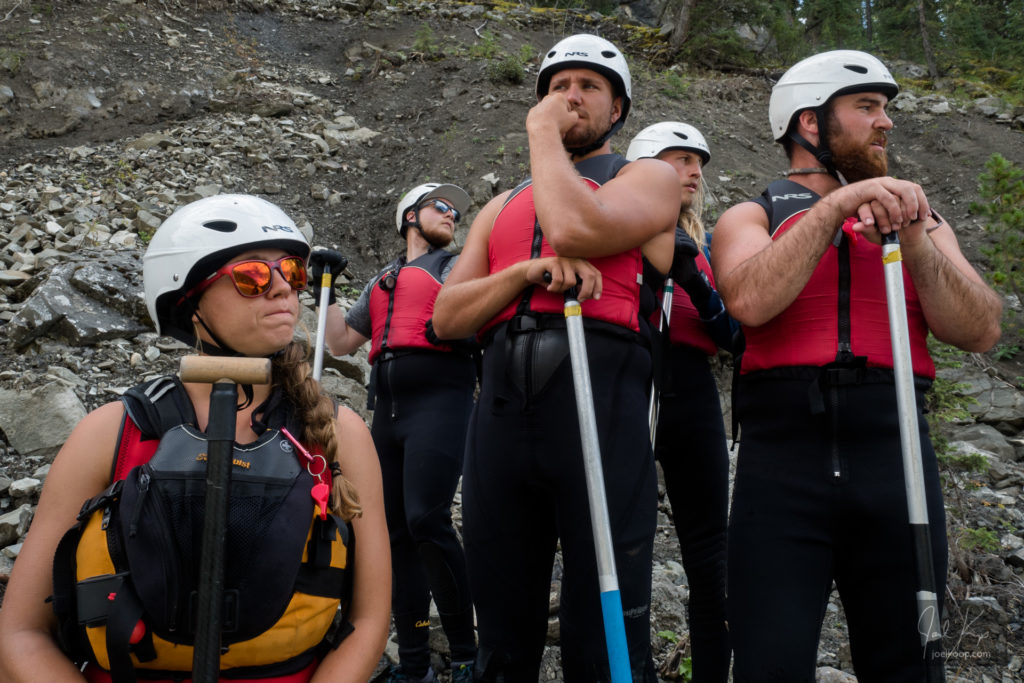
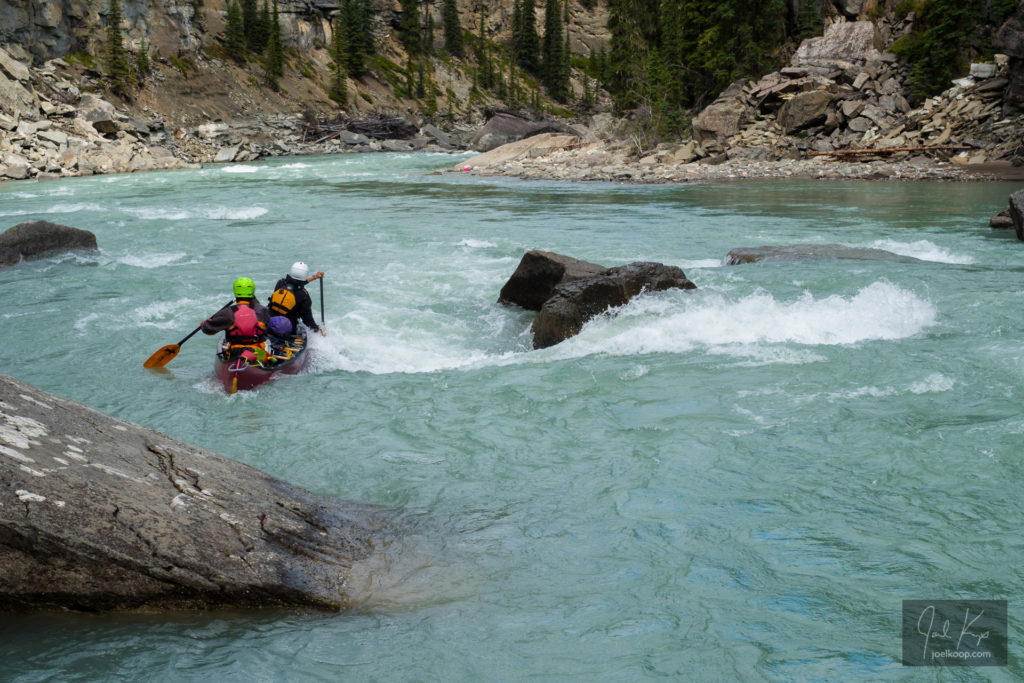
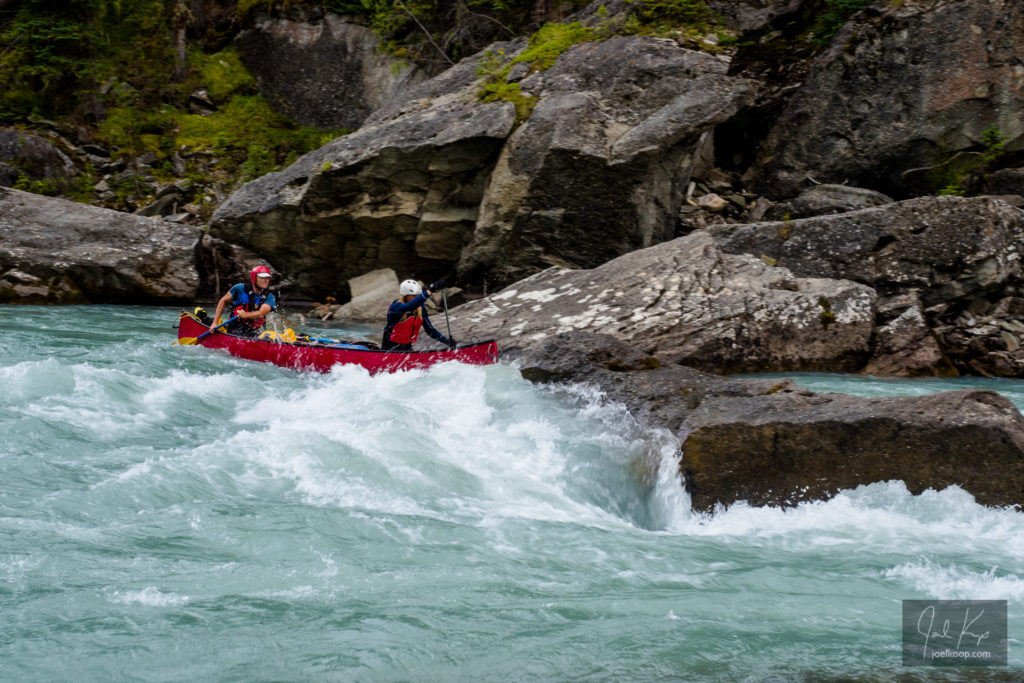
Sometimes they were just fun!
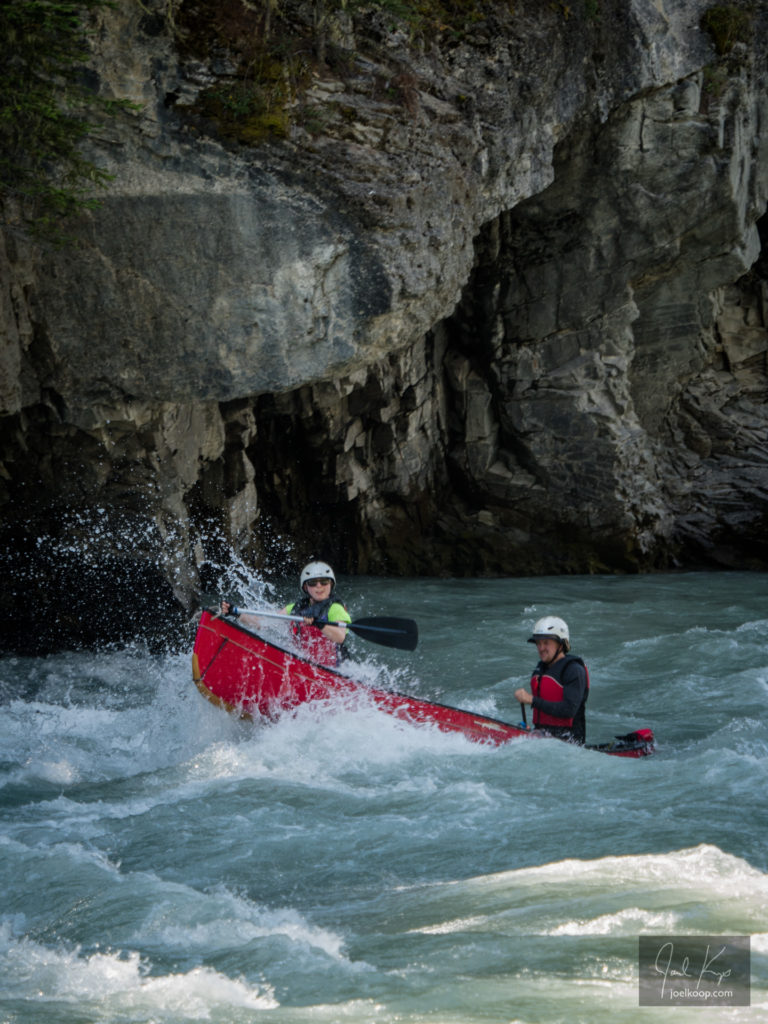
We were canoeing into two groups. I was near the back of the second group. Then there was a fairly long section of big waves followed by a tricky corner with no place to stop and scout from. A lot of the canoes had been taking on a bit of water in the long section of whitewater. I didn’t see what happened to the first group at the corner, but I saw the leader in my group flip over. The next canoe got pushed into a rock and dumped. Then the canoe right in front of me dumped. At that point I knew there was a good chance of me and Bjarke going over, so we just focused on picking a good line, not pushing through the big waves (to get less water in the boat) but having enough power to get through the current to the other side before getting pushed into the rock, and just getting through so we could help people out on the other side. We made it, but had quite a bit of water in our canoe. We eddied out on the other side of the turn, but it wasn’t much of an eddy and was trying to push us further downstream. We saw a beach on the other side and ferried across in our now-tippy canoe to assess the situation. There was one other canoe and five other people there. Across the river we could see one canoe and four people.
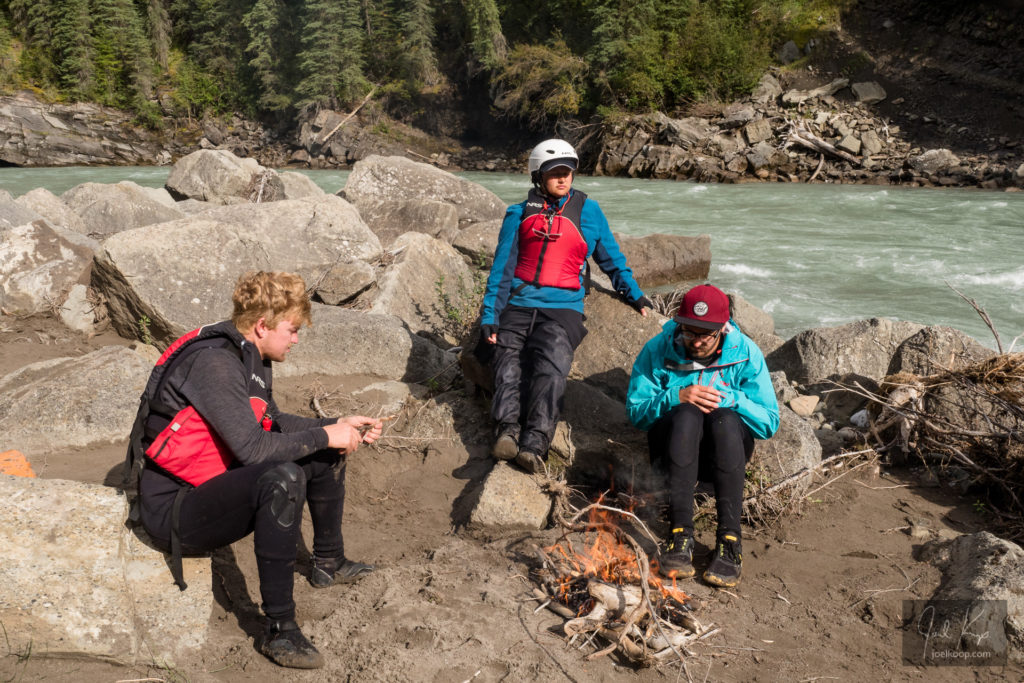

There were 21 in our group. Eventually, we heard that the leader of the first group had been able to keep 5 canoes from getting too far downstream and people were scattered along both shores, separated by water and cliffs. Eventually we accounted for everyone and all the canoes. Amazingly, the only damage was one broken yoke and a lot of cold, wet people. Duct tape “fixed” the first problem and lots of fires, shared warm clothes from accessible canoes, and movement fixed the second one. After a few hours (including a thunderstorm that stalled our efforts for a bit) we managed to collect everybody and everything in one spot and set off to find a place we could stop and camp. The corner is now affectionately named “Carnage Corner” by our group.
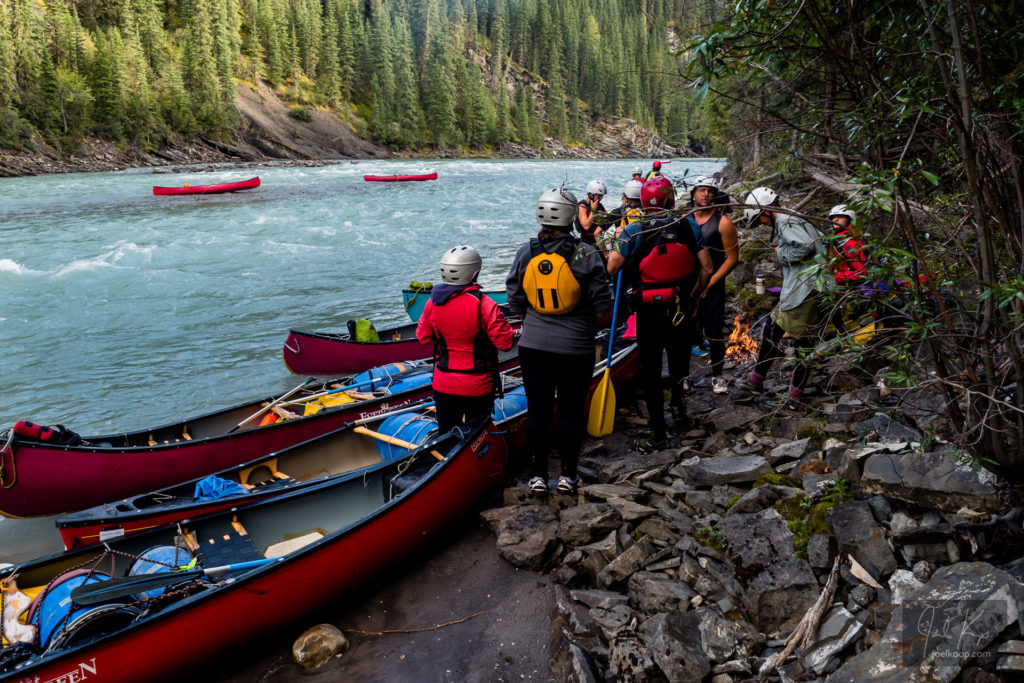
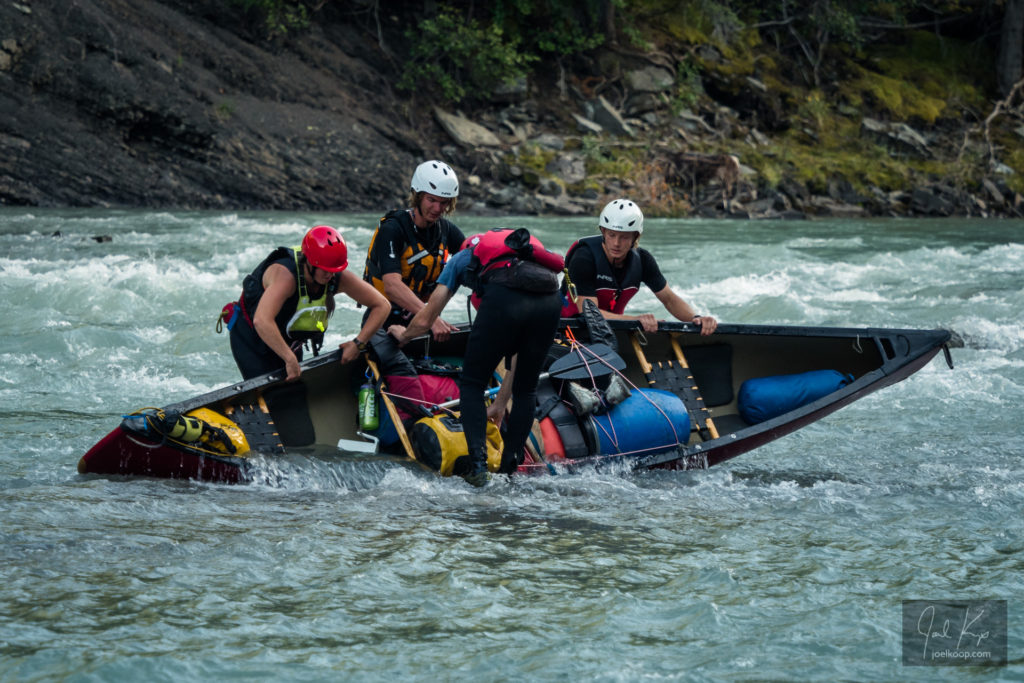
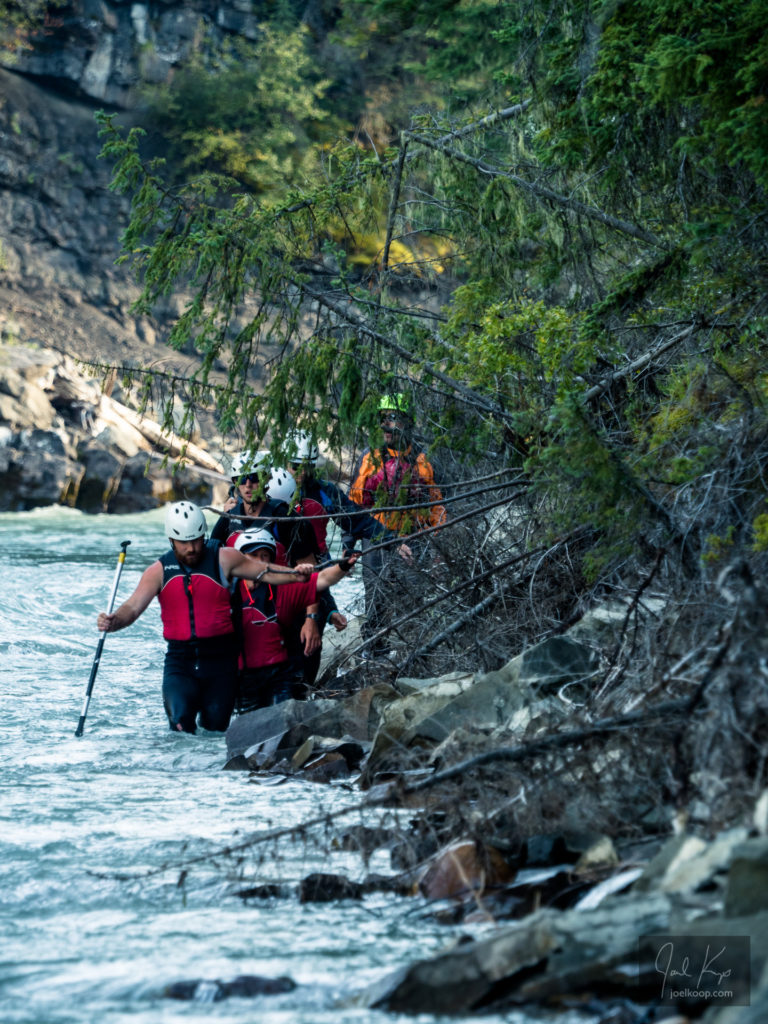
Exhausted and hungry, we pulled into our new campsite on a sandy island. Unloading, setting up camp, changeing out of wet clothes, and making supper took a long time, but we all had lots of stories to tell and listen to and the time flew by.
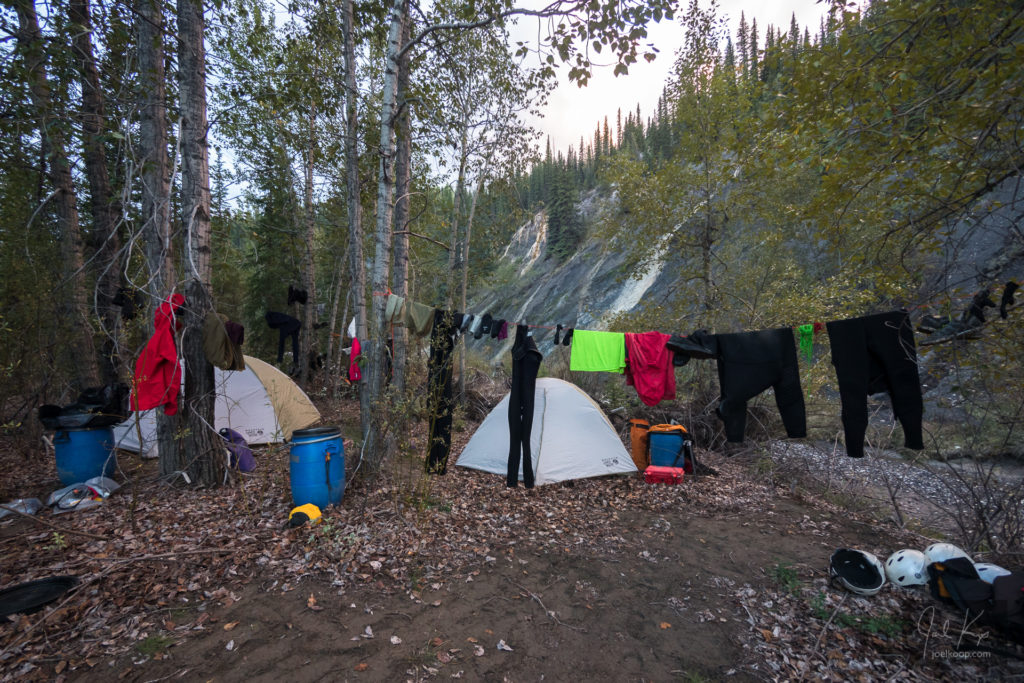
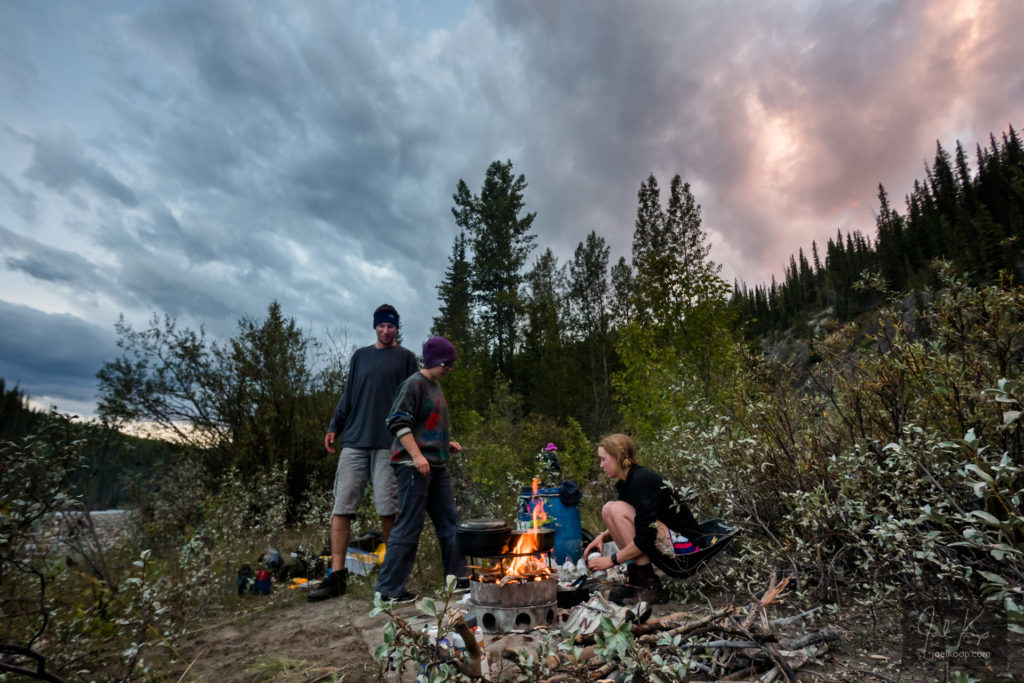
We had a good few days on the island, learning all kinds of plant identification, wilderness skills, and enjoying being completely immersed in nature.
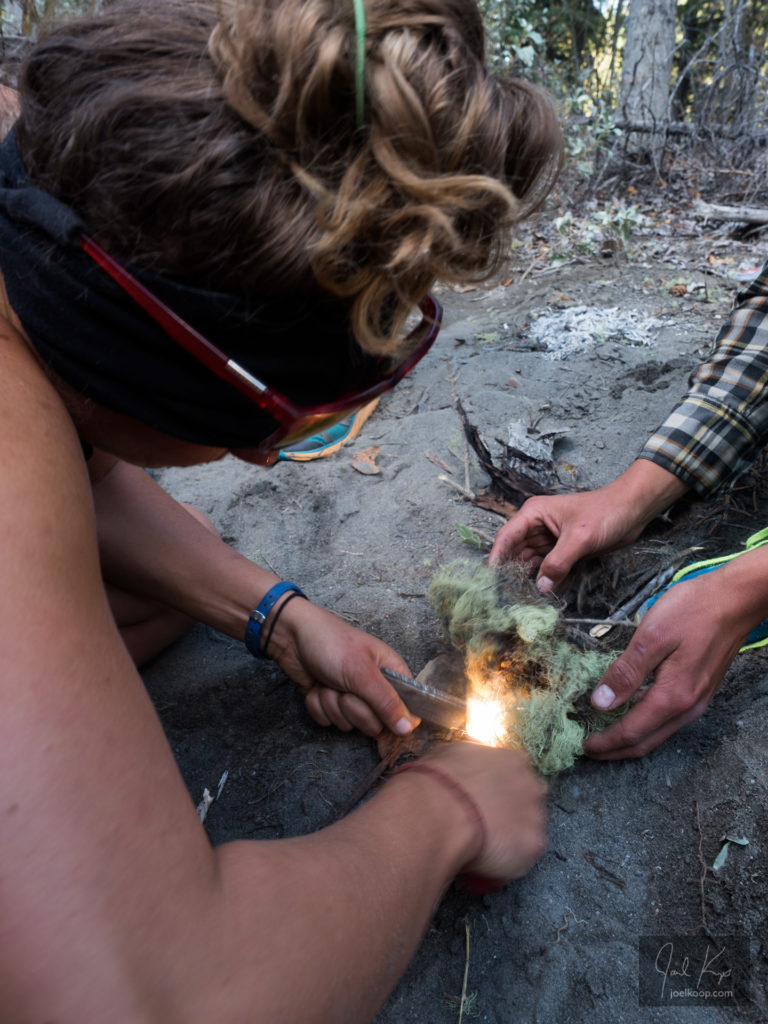
We had time to reflect on the different roles in emergency response, what our response was and what we wished it had been. It was decided that we would end the canoe trip early as there was a section further down the river where the consequences for a similar debacle would be much more severe. There was a canyon where, if someone dumped, they would be swimming for kilometers instead of meters. With water that cold, hypothermia would not only be possible but likely in such a situation. So we had time for chatting, campfires, and some much needed rest.

After a few days I was happy to get back on the water. As we went downstream there were still rapids but they seemed to get less constant and more easily avoidable. The cliffs on each side lowered a bit. Maybe it was just that I was well rested, but the canoeing seemed a lot easier and maybe a little less exciting.
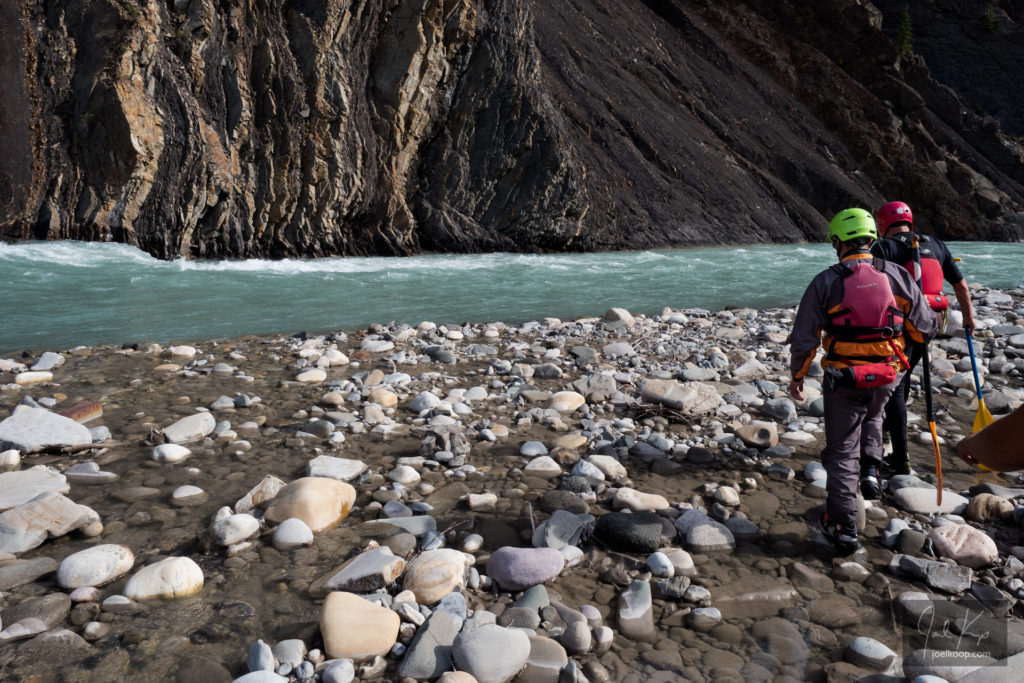

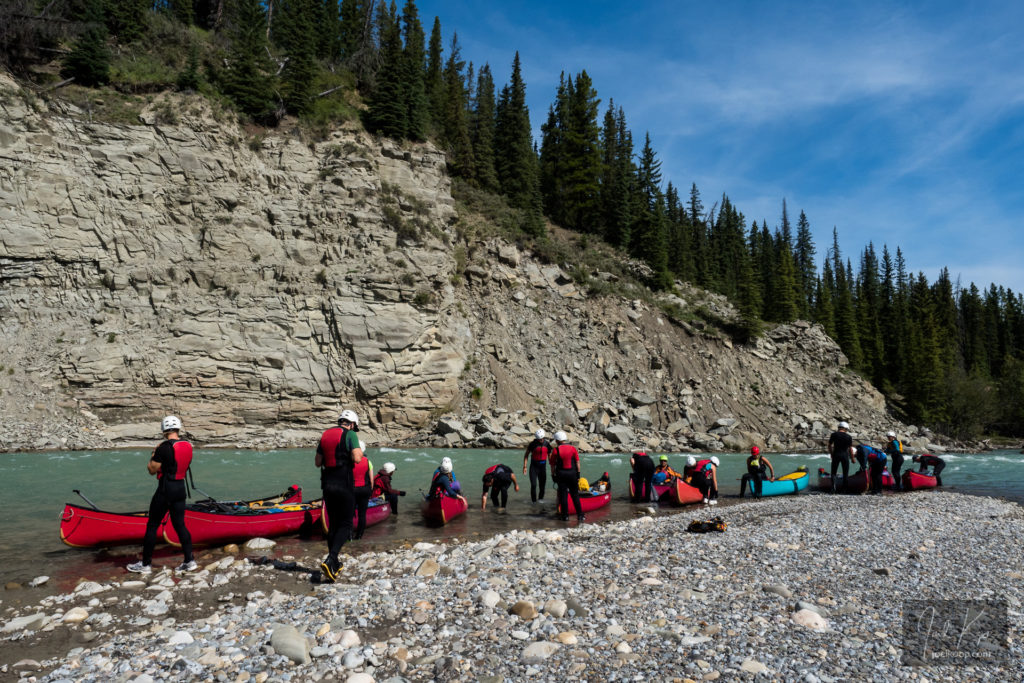
We got to our new take-out spot early in the afternoon and started the process of unloading canoes and loading up trailers. And we started thinking about the next section of our trip – backpacking.
